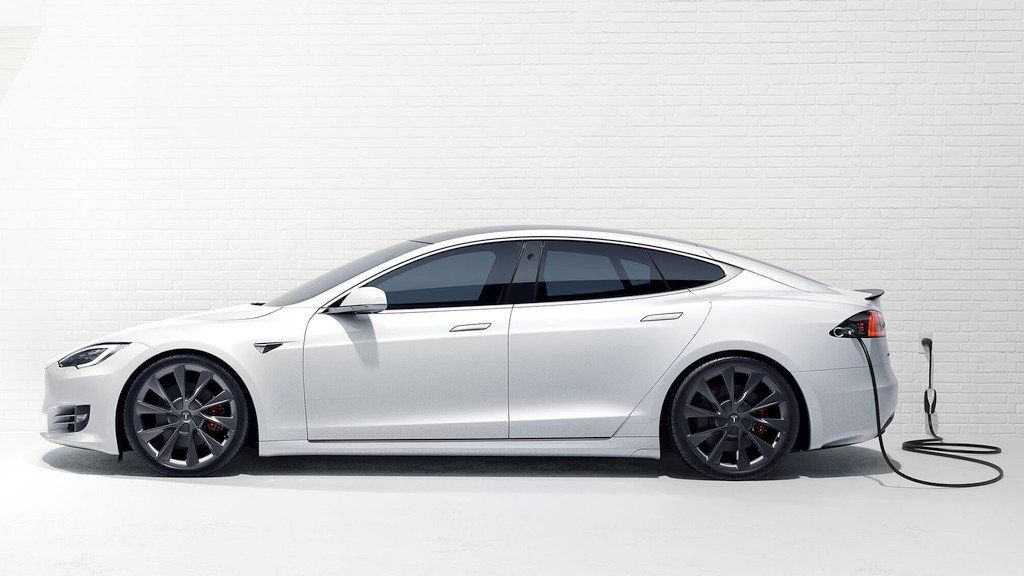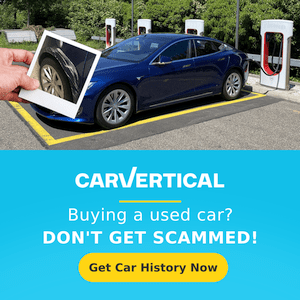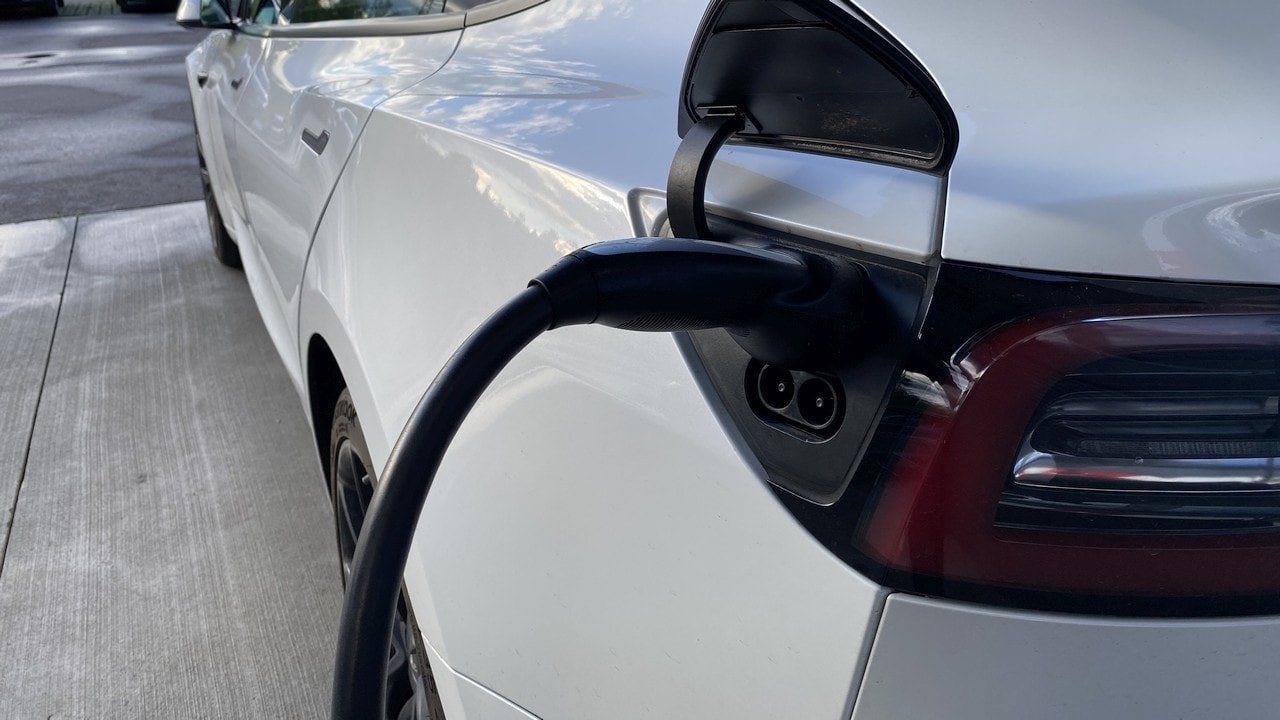How should one actually charge a Tesla battery as gently as possible? Does it make no difference if I constantly charge on the Supercharger as fast as possible? Or is it better to gently charge the Tesla battery as slowly as possible with a very low charging power at the household socket? I have not yet found any other Tesla-related topic that is more confusing and contradictory. There are so many opinions about it on the internet and sometimes exactly the opposite of what you have just read in another source is recommended. This article tries to explain why the advice is so different and which variant is best to charge the Tesla battery as gently as possible.
Rear Middle Flocking Box For Tesla Model Y (Set of 3 ABS Boxes)
Shop for more Tesla Accessories here!
Tesla’s recommendations for battery charging are relatively simple and straightforward.
- When the vehicle is parked and not charging, keep the battery charge level between 20 and 80%. Charging levels above and below this level over a long period of time and without driving will cause above-average damage to the battery.
- Only charge the battery above 90% if it is necessary and the range is otherwise insufficient for the planned trip.
The capacity of rechargeable batteries inevitably decreases over time. On the one hand, this is due to aging of the material. On the other hand, electrochemical processes occur during charging and discharging at the electrodes of the battery cells, which hinder complete charging or discharging. This is also known as degradation. Ultimately, all Tesla are affected by degradation, but traditionally, it seems to make a difference depending on how you charge your car. Unfortunately, there are no more detailed statements from Tesla about this. So why not always drive to the Supercharger and just load up to 80% full as fast as possible?
As far as the number of charging cycles is concerned, Tesla simply recommends recharging the vehicle daily to a maximum of 90%. This is not a problem, as one charge cycle always corresponds fully capacity of the battery. So if you charge from 0 to 100% once, this corresponds to one charge cycle. If you recharge only 20% of the battery 5 times, this corresponds to only one charge cycle and not five charge cycles. More information about charging cycles in the Tesla forum.
Battery fast charging with DC (Supercharger/Ionity)
Basically, there are two ways to charge a Tesla. Either via alternating current (AC) or via direct current (DC). Theoretically, direct current always arrives in the battery. If you charge your vehicle from an AC source, the onboard charger in the Tesla converts this current into direct current before it is fed into the battery. When charging at the Supercharger or other DC chargers, the charging station converts the current and feeds it directly into the battery without going through the slow onboard converter. From this one could conclude that the faster the charge, the better. So why should I charge with the slow AC current when DC is much more “direct” and faster? Concerning the time aspect of the charging time, this is correct but unfortunately fast charging also has disadvantages.
Fast charging heats up the battery and batteries dislike it very much if they are exposed to high currents during charging or discharging and simultaneously there are cold or too warm temperatures. For this reason, the Tesla battery management system in the car tries to keep the temperature of the battery within a certain range during the charging process and charging the battery as gently as possible. However, this is always a compromise between charging speed and above average damage. The temperature management does not eliminate the negative effects, but it does reduce them. Nevertheless, the battery capacity is reduced above average possibly with frequent DC charging. If you charge DC too often (e.g. on the Supercharger, Ionity or CHAdeMO), its maximum charging capacity will sooner or later be reduced if Tesla’s Model S and Model X. Model 3 does not seem to be affected by this so far, as the cell chemistry differs from Model 3 to Model S/X.
Then I simply charge the battery as slowly as possible
Because that would be the conclusion. Moreover, according to this statement in the German TFF Forum, this is even being communicated in this way in the Tesla Service Center Munich. Apparently, there it is written on a posted note that charging the Tesla battery gently with 3 kW (normal household socket) is recommended. The German car expert Ove Kroeger has also published two videos on this subject, in which he checks a three-year-old Model S with 50’000 km. With this mileage, the vehicle has only 1% battery degradation. Almost unbelievable! The reason for this is the driving and charging style of the owner. He never exposes the battery of his Tesla to high currents and always drives very gently without strong acceleration orgies. In addition, he almost always charged only with very low power of 3 kW over a long period of time and avoids superchargers wherever possible. (Video 1 / Video 2)
That sounds really great, but there are also disadvantages:
Disadvantages of very slow charging
- Charging losses due to the heating of components and the electrical resistance in cables and connectors occur during every charging process. But the overall efficiency decreases as the charging voltage drops. These charging losses are about 15-20% when charging at a 3 kW household socket, and only about 8-10% when charging at 11 kW AC on a Wallbox or with another three-phase charger.
- During charging, the computers in the vehicle are active. If the car is stationary and not charging, the computers are in an energy-saving mode. This extra energy consumption is added over a short period of time compared to charging and accumulates over the many hours of slow charging.
- In general, every time a lithium-ion battery is charged, chemical processes take place in the battery. Battery researcher Jeff Dahn has investigated these so-called “parasitic” damaging effects. They occur independently of the charging power and are time-dependent. This means that the longer a charging process takes, the more damaging this process is to the battery. His statement is that when charging in the ideal temperature range, it is mainly the increased charging voltage and not the charging power that is responsible for harmful effects. And the increased charging voltage is present many times longer when charging at a slow 3 kW AC charge than when charging at 11 kW AC or DC fast charging. An English Transcript from Jeff Dahn’s Presentation.
- The battery does not warm up properly during slow charging depending on the ambient temperature. This means that it is not charged in its optimal temperature range, which increases the “parasitic” damage effects.
- Another disadvantage is the load on the memory module (eMMC) of the MCU. While the computer is active in the vehicle, data is written to the memory chip. In older MCU1 computers, this memory chip breaks down after a certain number of write cycles. This is a problem especially with older Model S. Vehicles from March 2018 on have the MCU2 installed, here the problem has been mitigated (or at least shifted further into the future) with a larger memory chip. Nevertheless, slow loading keeps the computer constantly active for hours and thus also writes to the memory module. A replacement of the MCU costs about 2500 EUR after the warranty at Tesla. Meanwhile, there are fortunately unofficial MCU repair possibilities.
Gently and slow Tesla battery charging therefore has its advantages over fast charging, but unfortunately also new disadvantages.
Then there is only the compromise?
The compromise lies somewhere in between. Tesla driver Christian Pogea explains in his German blog exactly this dilemma why 11 kW to 16.5 kW is the most gentle charging speed.
According to a german article in the TFF Forum, this can be optimized even further. In the past, some Tesla buyers were even given a note with tips for slow charing when handing over the car.
In fact, at 12-14A the charging efficiency is higher compared to 16A. At 14A it should be 92-94%, at 16A mostly a little less than 90%. So if you have time and can charge three-phase, you should ideally charge with 12A instead of 16A. A disadvantage of this variant is the new Tesla mobile charger UMC2, which is included in all new cars since the beginning of 2019. With the UMC2 only single-phase charging with a maximum of 3.7 kW is possible. So if you want to charge faster, you have to buy a Wallbox or a third-party charger. This is usually associated with costs between 700 and 2000 EUR/CHF. Depending on how complex the electrical installation is. It remains questionable whether this financial effort will pay off at some point through the electricity savings. In the end, it also depends on how often you charge at home or away.
Conclusion on gently Tesla battery charging
There is no such thing as an optimal charging behavior without disadvantages. But if you have time and do not want to put unnecessary strain on the battery of your Tesla, the right method can definitely make a difference. Nevertheless, I am not pleased with the result of my research and Tesla is unfortunately very reluctant to give official information about the strength of the negative effects of the different charging methods. Which effect is more harmful? The damage caused by high currents during fast charging or the parasitic effects caused by long slow charging? Jeff Dahn’s statements about the parasitic effects are from 2016, and battery research is probably already further along in this area, as these Tesla patents also show. Development in this field is making enormously rapid progress. What is still considered to be above average damage for a Model S from 2013 is probably no longer relevant for a Model Y from 2021. Nevertheless, I think that the proposal to reduce the AC charging from 16A to 12-14A is a recommendable compromise for current vehicles if time is not an issue. It also saves your wallet by a lower power consumption.
I have tried to capture all these advantages and disadvantages in a graphic at a glance. The smaller the colored area, the more gentle the charging is:
Check your VIN number:







